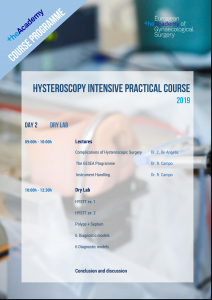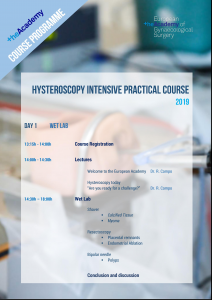Virtual hysterosalpingography: a pain-free diagnostic technique
In the study of infertility, tubal patency and correct uterine morphology are key parameters that should be studied in the first steps in the fertile study of the couple, in this case, of the woman.
Below you have an index with all the points that we will discuss in this article.
IndexWhat is the HSG?
The technique of hysterosalpingography (HSG) allows to rule out abnormalities of the cervix, such as lengthening, an excessive amplitude that can be related to a cervical incompetence; in the uterine cavity it allows to detect the position of the uterus, the possible presence of cysts, fibroids, adhesions, or some congenital alteration such as the uterus didelfo or septate. It is possible with this technique to detect even some types of ovarian tumors and even bone malformations such as spina bifida occulta.
Obstructions in the tube prevent the sperm from reaching the mature ovum, which is waiting for its fertile period in the outer third of the fallopian tubes. On the other hand, the morphological anomalies of the uterus can be causes of failures of implantation, or they can cause abortions if gestation is achieved, because it does not form a correct environment for fetal development.
Conventional hysterosalpingography evaluates the morphology of the reproductive organs by radiographs after injecting a contrast liquid through a thin catheter through the cervix, this involves uterine traction to facilitate the passage through the cervix and next to the radiopaque liquid is a source of much discomfort for the patients. Some even report it as a very painful procedure and sometimes the procedure can not be completed, which lasts about 15 minutes.
Advantages of the virtual HSG
The evolved version of HSG is virtual hysterosalpingography by multislice computed tomography, in which the study is performed as we know by CT.
The virtual hysterosalpingography evaluates the female organs, being necessary only for this a few seconds and the traction of the cervix is not necessary, which reduces the discomfort of the technique to the patient. In addition, due to the principle of the technique, computerized tomography is possible to analyze the organs attached to the uterus and the tubes, observing the organs in close relationship with them.
Virtual Hysterosalpingography improves comfort during the technique and increases informativity
The tool is also an advantage for the gynecologist who obtains instant images that allows him to move almost real time through the cavity and the tubes.
The radiation dose is reduced to 10-15% of that required in conventional hysterosalpingography.
Virtual hysterosalpingography
Studies
The technique was developed by the diagnostic group Maipú, headed by Patricia Carrascosa. In the congress of the prestigious RSNA (the Society of Radiology of North America), a work was presented that showed the experience in 10,000 studies carried out and in which 80% of the women in whom the procedure was carried out reported a non-existence of pain or great discomfort during the technique.
The absence of contrast, the avoidance of the clamping of the cervix added to the speed of the process, of few minutes, makes this evolution of hysterosalpingography a highly valued technique for the early study of female infertility.
We make a great editorial effort. Sharing this article helps us and motivates us to continue our work.
156
Authors and collaborators
Laura Garrido Embryologist Graduated in Biotechnology from the Pablo de Olavide University (UPO), with a Master's Degree in Biotechnology of Human Reproduction Assisted by the University of Valencia (UV) and the Valencian Institute of Infertility (IVI). Experience in IVF, andrology and general analysis laboratories. Embryologist specialized in assisted reproduction. More about Laura GarridoAll about assisted reproduction in our channels.
67,962 3,965 16,718
Comments
Post a Comment